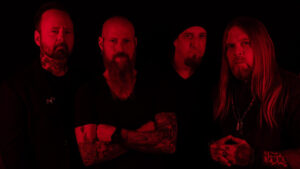Metallica’s Death Magnetic Celebrates 15 Years
Metallica’s Death Magnetic Celebrates 15 Years
After Metallica’s widely criticized release of “St. Anger” in 2003, the band found themselves at a pivotal juncture. Known for their willingness to take risks and push boundaries, the members appeared to have strayed too far from their musical roots. Then, on September 12, 2008, “Death Magnetic” hit the scene, leaving those who had dismissed Metallica as affluent family men disconnected from their fanbase scrambling for words as the opening riffs of the first track, “That Was Just Your Life,” blared through their earbuds.
For a seasoned Metallica aficionado like myself, this album was a return to their true essence, channeling the unadulterated progressive thrash energy that had been missing since 1988’s “…And Justice for All.” The band’s ninth studio album not only displayed their creative brilliance but also showcased the kind of synergy they hadn’t experienced since the loss of bassist Cliff Burton. Even though “Death Magnetic” featured bassist Robert Trujillo for the first time, Metallica exuded the chemistry of the original Four Musketeers. It wasn’t just about the music; it was about the band members finally seeing eye-to-eye after years of divergence.
In the words of drummer Lars Ulrich in 2012, “We finally discovered our dynamic. We stopped competing and realized that we’re at our best when we’re not trying to outdo each other. It’s not about winning arguments; it’s about appreciating that the sum of both of us is always greater than either of us alone. We depend on each other and are better together.”
The transformation in Metallica’s dynamics began to surface nearly a year after their St. Anger tour hiatus when they opened for The Rolling Stones in San Francisco on November 13 and 15, 2005. A warmth in their relationship emerged, marking a turning point.
In early 2006, Metallica convened at their San Rafael studio to piece together the songs that would become “Death Magnetic.” While retaining some of the groove from “St. Anger” and “Load” in tracks like “The End of the Line” and “Broken, Beat & Scarred,” the majority of “Death Magnetic” was fast-paced, thrashy, and filled with multifaceted compositions averaging around seven minutes per song. The album also reintroduced melodic guitar harmonies and nimble-fingered solos, trademarks missing from “St. Anger.”
The groundwork for “Death Magnetic” began as early as 2004 when Metallica started jamming riffs backstage at venues. By April 2006, they had the frameworks for six to seven new songs, and guitarist Kirk Hammett mentioned they were working on about 15 songs, adding new material at a steady pace.
Parting ways with Bob Rock, their producer since “The Black Album,” Metallica teamed up with producer Rick Rubin (known for his work with Slayer, Slipknot, and Black Sabbath). Rubin encouraged them to revisit their first four albums, helping them refine their fast-paced, focused songwriting. The challenge was not a lack of ideas but rather an abundance of options.
As Ulrich explained, “We’re so good at writing that there are countless possibilities for each song. James Hetfield might play a great riff, and depending on how I accompany it with the drums, it can turn into a fast thrash song, a mid-tempo stomper, or a melodic ballad. Our options are endless.”
Rick Rubin held off on recording until he was confident that Metallica’s new material was nearly complete. The band narrowed down 25 songs to 14, and in April 2007, they began recording at Sound City Studios in Van Nuys, California, as well as Shangri La Studios in Malibu and their own headquarters in San Rafael.
Thematically, “Death Magnetic” delved into dark subjects such as mortality, self-destruction, betrayal, and addiction across its ten tracks. James Hetfield noted, “Some people are drawn to death like a magnet, while others fear it and push it away. We all have to deal with it at some point, but it’s often a topic we avoid discussing.”
In line with its theme, the album cover depicted a white coffin in a grave surrounded by metal shavings forming a magnetic pattern. Yet, the design inadvertently resembled a more provocative image. Whether this was a deliberate commentary on the duality of birth and death or an unconscious artistic choice remains uncertain. However, Metallica was aware of the double entendre and embraced the abstractness and diverse interpretations it offered.
For a savvy Metallica fan like me, “Death Magnetic” marked a triumphant return to their roots, reinvigorating their sound and rekindling the unity that had once defined the band. It was a testament to their enduring creativity and willingness to evolve while staying true to their signature style.




